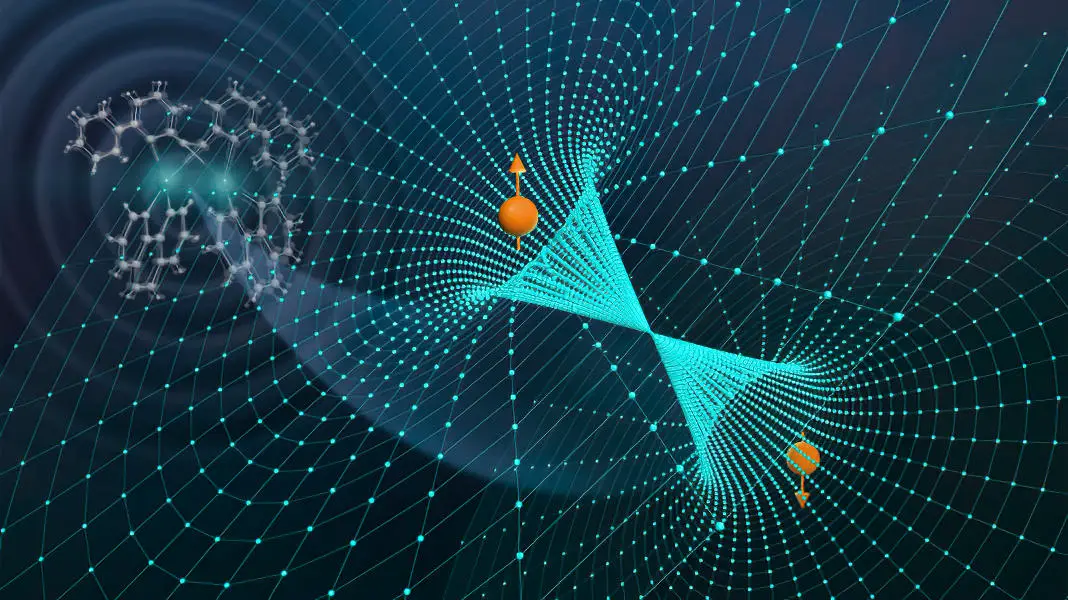The first signs of superdiffusion and Oppenheimer approximation are detected.
First-time physicist simulated superdiffusion and broke Oppenheimer approximation. At this point, somebody might ask what someone would do with super diffusion and Oppenheimer approximation. When we research something, we must realize one thing. When researchers created some theories and models, nobody made anything with those things. But when technology advances those things become more and more important.
The Oppenheimer approximation means that the observer can separate the electron shell's wave function from the atom's core wave function. Or otherwise saying: electron shell wave function can separated from the atom's core wave function. And if we continue this thing, and make an induction conclusion, we can separate the wave function of all atomic and subatomic particles from each other.
As an example, we can separate a quark's wave function from an electron's wave function. The wave function is the tool that creates interaction between objects. So when laser ray interacts with atoms as an entirety it interacts directly only with its electron shells.
Then those electrons send the radiation to the atom's core. So electrons act as transmitters in this process. A laser ray hits electrons. Then, they convey that radiation to the atom's core.
The Oppenheimer approximation means that researchers can affect all atomic and subatomic particles separately. That means we can, in theory, push single quarks in the atom's core if we find a beam, that is tight enough.
Oppositely, the Oppenheimer approximation means that we cannot affect all atom's particles at the same time. All parts of atoms are affected separately because electron's places are moving and their distance from the power source is different.
"A molecule with two platinum atoms absorbs a photon and starts to vibrate. The vibration enables the molecule’s electron spin to flip, allowing the system to simultaneously change electronic states in a phenomenon called inter-system crossing. Credit: Argonne National Laboratory." (ScitechDaily.com/ Quantum Leap: Physicists Successfully Simulate Super Diffusion)
"Some particles are dissolved in a glass of water. At first, the particles are all near one top corner of the glass. If the particles randomly move around ("diffuse") in the water, they eventually become distributed randomly and uniformly from an area of high concentration to an area of low, and organized (diffusion continues, but with no net flux). (Wikipedia/Diffusion)
In diffusion engines, particles like salt liquid are in a chamber. Then the hatch will open, and that strong mixture travels to the weak mixture. The diffusion engine uses aimed diffusion. Sometimes, this system is called the osmosis engine. Some people say that the terms osmosis and diffusion engines are the same thing.
"The process of osmosis over a semi-permeable membrane. The blue dots represent particles driving the osmotic gradient". (Wikipedia/Osmosis/
The osmosis system, where the membrane is full of tiny generators, can deliver energy for large entireties. Aiming the flow happens by covering the chamber where the nano-membrane is by using a shell that the liquid cannot pass. And moving the shells and holes. That made it possible to change the direction where atoms are moving.
In nanomachines, diffusion (osmosis) engines are like control rockets in spacecrafts.
Superdiffusion is the diffusion where atoms are moving very fast. In diffusion liquid mixtures like salt and water move from the stronger to the dilute. And superdiffusion is the case where liquids are moving faster. Sometimes in history, inventors planned to use diffusion as a power source for engines. But those machines were useless until researchers created nanotechnology.
Nanomachines can use diffusion engines in very sharp control. Those systems operate in the same role as control rockets operate in spacecraft. The atoms or salt mixture that travels through the membrane can make it possible to control nanorobots very accurately.
The nanomachine uses tiny hatches and semipermeable membranes to control its movements. The hatch closes and opens the membrane and that makes it possible to use diffusion engines as accurate nanomachines that require this extreme accuracy for surgery and other similar cases.
Nanomachines can use diffusion to release the medicines or genomes in the right position. In those nanomachines, the diffusion engines operate as control rockets.
Maybe future medicine can be made in reprogrammed cells that the system injects in the right place. Or nanomachines can inject things like RNA molecules into the cells. When those cells create medicines and do their duty, they will die by preprogrammed cell death.
But there is the possibility to create diffusion systems that deliver energy to larger entireties. It is possible to create nano nets like graphene there are many nano-size turbogenerators. When atoms are traveling through that wall they rotate those small propellers. And then those nanosystems give electricity. The idea of nanotechnology is that a large number of those machines can act as an entirety.
https://scitechdaily.com/breaking-the-born-oppenheimer-approximation-experiments-unveil-long-theorized-quantum-phenomenon/
https://scitechdaily.com/quantum-leap-physicists-successfully-simulate-super-diffusion/
https://en.wikipedia.org/wiki/Diffusion
https://en.wikipedia.org/wiki/Osmosis





No comments:
Post a Comment
Note: Only a member of this blog may post a comment.